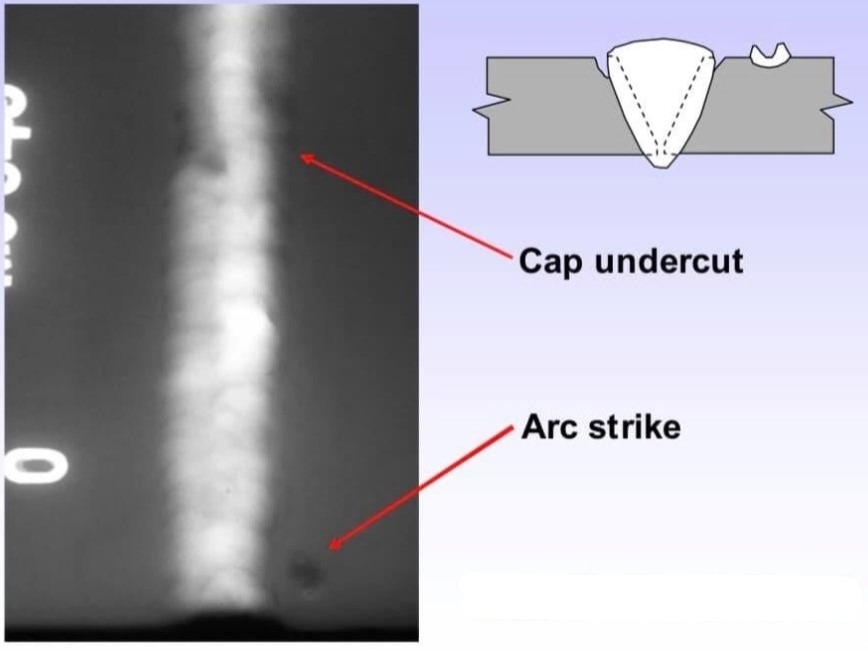Mastering the Art of Welding: How to Stay Clear Of Undercut Welding Issues for Flawless Manufacture Results
By comprehending the root causes of undercut welding and carrying out effective techniques to avoid it, welders can boost their craft to new levels of excellence. In the quest of remarkable construction outcomes, grasping the art of welding to stay clear of undercut problems is not just a skill yet a need for those making every effort for excellence in their job.
Understanding Undercut Welding

To avoid undercut welding, welders should make sure proper welding specifications, such as readjusting the current, voltage, traveling rate, and maintaining the right electrode angle. Additionally, using the ideal welding technique for the particular joint arrangement is important. Utilizing weaving movements or backstepping techniques can help make sure correct weld metal deposition and decrease the possibility of undercut development. Normal inspection of welds during and after the welding process is additionally vital to capture any undercut early and make needed changes to avoid more problems. Preventing weld undercut. By recognizing the root causes of undercut welding and applying safety nets, welders can attain high-quality, structurally sound welds.
Reasons For Undercut in Welding
Comprehending the factors that add to damage in welding is necessary for welders to generate top notch, structurally audio welds. When the weld steel does not correctly fill the groove developed in between the base metal and the formerly deposited weld steel, damaging happens. Numerous variables can cause damage in welding. One usual cause is excessive warmth input. Welding at high temperature levels for prolonged durations can cause the base metal melting even more than preferred, leading to undercut. Inadequate welding existing or inaccurate welding speed can also add to damage. Inadequate current may not supply adequate warm to thaw the base and filler steels appropriately, while extreme rate can stop proper blend, triggering undercut. In addition, improper electrode angles or wrong torch adjustment methods can create locations of low weld metal deposition, advertising undercut. Comprehending these reasons and applying correct welding strategies can aid avoid undercutting concerns, making certain strong and long lasting welds.
Strategies to stop Undercutting

To minimize the risk of undercutting in welding, welders can use calculated welding techniques intended at improving the quality and integrity of the weld joints. One efficient technique is to adjust the welding specifications, such as voltage, useful content present, and travel speed, to make sure appropriate warmth input and deposition. Preserving an appropriate electrode angle and ensuring regular traveling rate can also assist avoid undercut. In addition, utilizing the appropriate welding strategy for the specific joint setup, such as weave or stringer grains, can contribute to reducing undercutting. Preventing weld undercut.
Using back-step welding methods and regulating the weld grain account can additionally help distribute warm uniformly and decrease the threat of undercut. Regular evaluation of the weld joint during and after welding, as well as applying high quality guarantee actions, can assist in addressing and spotting undercutting problems quickly.
Importance of Proper Welding Criteria
Choosing and maintaining appropriate welding specifications is essential for achieving successful welds with very little issues. Welding specifications describe variables such as voltage, existing, travel speed, electrode angle, and protecting gas flow price that directly influence the welding process. These criteria have to be carefully adjusted based on the sort of material being bonded, its density, and the welding technique employed.
Appropriate welding specifications ensure the correct amount of warm is put on thaw the base steels and filler material uniformly. If the criteria are set too high, it can result in excessive warm input, creating distortion, spatter, or burn-through. On the other hand, if the specifications are too reduced, insufficient fusion, navigate to this site lack of penetration, or undercutting might occur.
Top Quality Guarantee in Welding Operations
Final Thought
In verdict, grasping the art of welding needs an extensive understanding of undercut welding, its reasons, and strategies to stop it. By making certain correct welding specifications and carrying out quality control techniques, remarkable fabrication outcomes can be achieved. It is vital for welders to consistently strive for quality in their welding procedures to prevent undercut concerns and generate premium welds.
Undercut welding, a common flaw in welding procedures, takes place when the weld steel doesn't effectively fill up the groove and leaves a groove or anxiety along the bonded joint.To stop undercut welding, welders must guarantee proper welding criteria, such as changing the present, voltage, travel speed, and maintaining the proper electrode angle. Poor welding present or incorrect welding rate can additionally contribute to damage.To mitigate the threat of undercutting in welding, welders can employ tactical welding methods aimed at improving the quality and stability of the weld joints.In conclusion, grasping the art of welding needs a comprehensive understanding of undercut welding, its reasons, and strategies to avoid it.